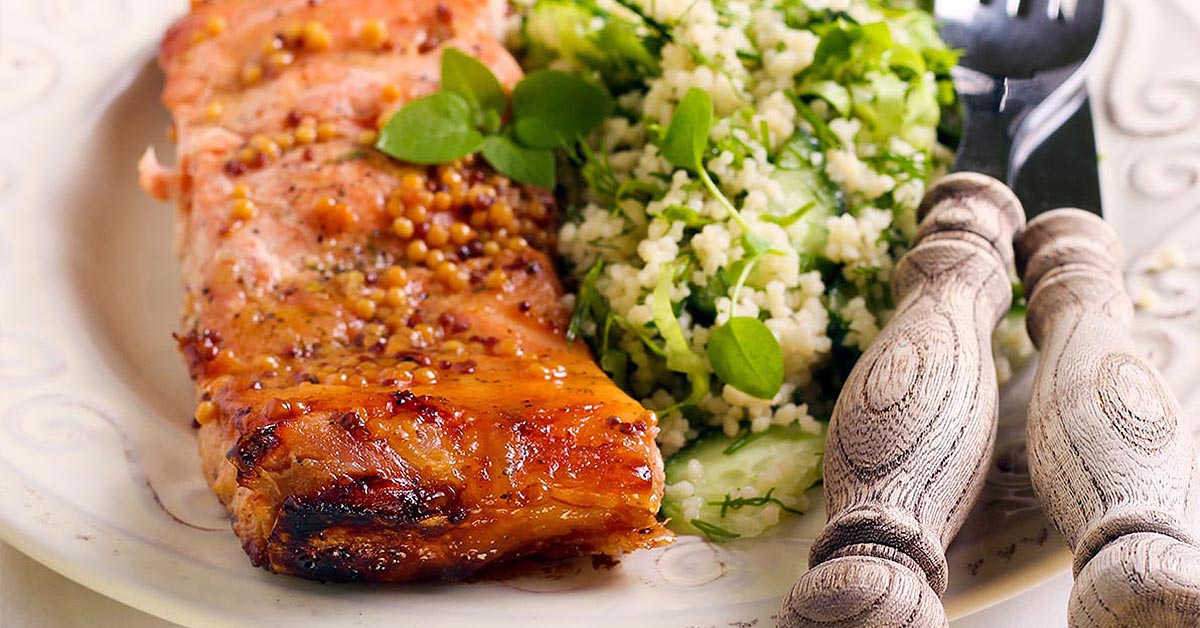Fish for a Healthy Heart
- Category: Health & Wellness, Heart Health
- Posted On:
- Written By: Kara Pitou

With the celebration of American Heart Month underway, it’s the perfect time to talk about the benefits that eating fish can have on reducing the risk of cardiovascular disease.
It is widely known that fish consumption in your diet routine is a healthy choice, but do you know why? The simple answer is Your heart.
Illness and death attributed to cardiovascular disease are on the rise. Nearly one in three adults, or more than 8 million Californians, are living with at least one of the forms of cardiovascular disease, which includes heart disease, heart failure, stroke, and hypertension. Preventing your risk by eating fish may be one of the most important steps one can take -- and it’s easy.
According to the American Heart Association, fish consumption is recommended for everyone -- healthy individuals, those at a higher risk, or for those who already have cardiovascular disease. The benefits stem from the low saturated fat content and high amount of omega-3 fatty acids found in fish. Omega-3’s also can amazingly decrease triglyceride levels, slow the growth of plaque that can block arteries and can lower blood pressure.
You may ask yourself, “Can’t I just take an omega-3 fish oil supplement if I don’t want to eat fish?” Sure, taking that supplement will impart some benefit for you, but fish oil supplements have been shown to be inferior to fish consumption. Studies have indicated that omega-3 supplements are not circulated or stored within our bodies as effectively as omega-3 fats obtained from eating fish, even though omega-3 fish oil supplements were given at higher concentrations during those studies. The difference in absorption is thought to be caused by the structure of the fats found in the fish, which may enhance their absorption into your blood stream.
The American Heart Association recommends eating fish at least twice each week. Your serving size should be 3.5 ounces or ¾ cup flaked fish. That amount is about the size and thickness of an adult’s palm.
You may be wondering what types of fish you should eat to get the most omega-3’s into your system. You should know, not all fish are created equal. Fatty fish, such as salmon, mackerel, herring, trout, sardines and albacore tuna are the best choices for increasing your omega-3 levels. If you’re looking for a leaner fish, many of those contain omega-3’s as well.
Other types of meat contain omega-3 fats, but only in limited quantities. The quantity depends on what feed was ingested by the animal. Fish also have the added advantage of having a low-saturated fat and cholesterol content, in addition to the higher amount of omega-3’s.
To help get everyone started on the path to great heart health here’s an easy and delicious fish recipe that makes for a great weeknight dinner.
Maple Ginger Baked Salmon
Serves: 4
INGREDIENTS:
- 1 pound salmon filets, fresh or frozen
- 2 tablespoons olive oil
- 4 cloves garlic, minced
- 2 teaspoons ginger
- 1/4 cup maple syrup
- 2 teaspoons soy sauce
- 2 tablespoons lemon juice, divided
INSTRUCTIONS:
- Preheat oven to 400 degrees F.
- If using frozen salmon filets, thaw them according to package directions.
- In a small mixing bowl, combine olive oil, minced garlic, ginger, maple syrup, soy sauce, and 1 tablespoon lemon juice - stir until combined.
- Place maple mixture and salmon filets into a sealed plastic bag and marinate for 10 – 15 minutes (never longer than 30 minutes) in the refrigerator.
- After salmon is done marinating, place the filets into an 8 x 8 glass baking dish, skin side down. Pour the remaining maple mixture over the filets.
- Bake uncovered for 20 - 25 minutes, or until easily flaked with a fork and a thermometer registers 145 degrees F. I recommend stopping halfway at 10 - 15 minutes to spoon the maple mixture in the baking dish over the fish, and placing back into the oven until it is finished baking.
- Spoon any leftover maple sauce left in the baking dish over the fish before serving.
- Sprinkle remaining lemon juice over the filets if you desire.
- Enjoy!






.jpg)